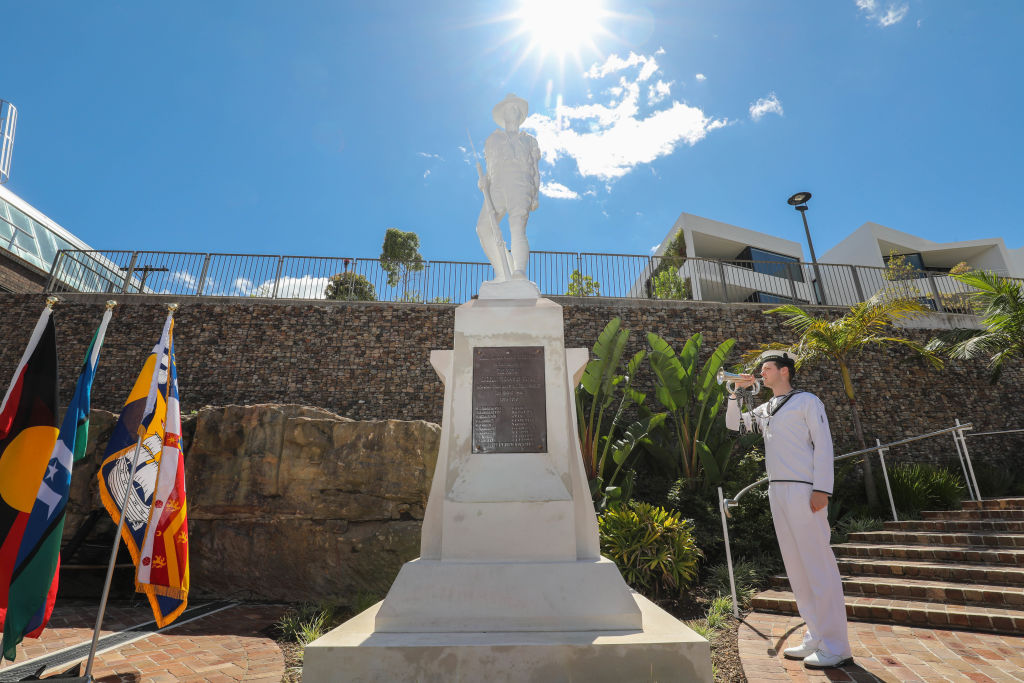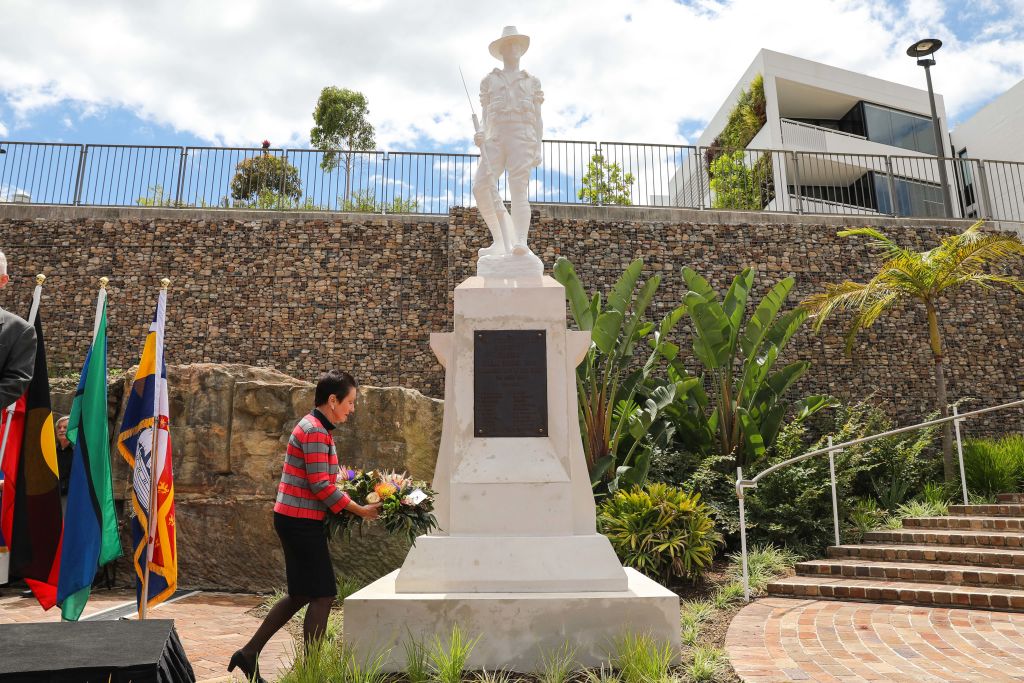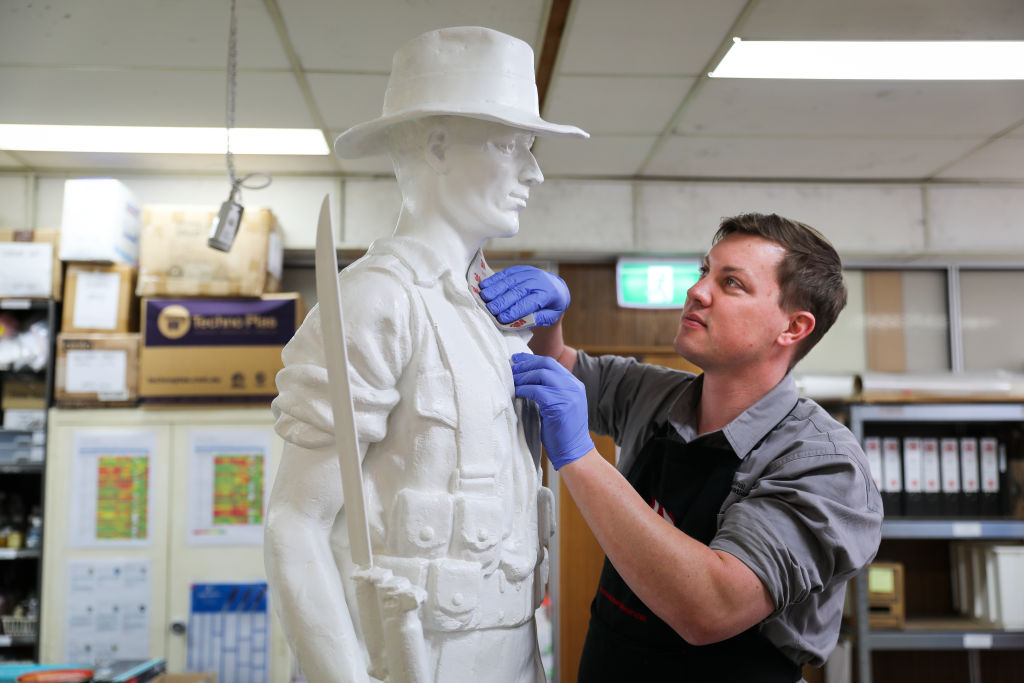See more of our history and heritage.
Published 13 November 2018, updated 7 November 2022
A much-loved World War I digger statue returned to its home in Glebe’s Harold Park after 60 years.
At a moving ceremony, the first memorial featuring a World War I digger statue made in Australia was rededicated and welcomed home to Harold Park.
A bugler played the Last Post. Clergy from 3 local churches said prayers and blessed the statue as members of the community gathered to pay their respects.

The official rededication on Thursday 8 November took place 102 years after the statue was first unveiled – and 100 years after peace was declared at the 11th hour of the 11th day on the 11th month in 1918.

Lord Mayor Clover Moore was joined by members of the Glebe Society and State Transit Authority who had campaigned for the historic memorial’s restoration. As part of the ceremony, the Lord Mayor and Diane Hutchinson from the Glebe Society both laid a wreath.

The original Rozelle tram workers were devastated by the deaths of their colleagues at Gallipoli and later on the western front. They banded together to fund the statue, which was housed in the workers’ award-winning gardens.
There are 34 men listed on the memorial. 4 are known to have served in Gallipoli, the rest served on the western front.
This is Australia’s first digger statue commissioned and paid for by work comrades to honour the soldiers who died during World War I.

Unusually for its time, the statue depicts an Australian soldier in a relaxed pose. His slouch hat is turned down all round, shirt opened at the collar and sleeves rolled up. Holding a rifle, the bayonet is fixed and ready for battle.
The statue is made from cement and was created by Irish-born sculptor, Edwin W McGowan in Sydney in 1916. McGowan lived in Leichhardt for a number of years and became renowned for his work creating lifelike digger statues.

For 40 years, the digger stood guard outside the Rozelle tramsheds. When they were closed in 1958, it was moved with the tram workers to the Leichhardt bus depot. After a request from the Glebe Society, the City agreed to acquire the statue and restore and relocate it to the original site.

Specialist restoration company, International Conservation Services, repaired the historic figure.
While the digger statue was intact, restoration and conservation work was needed to repair the cracked and peeling statue. The statue was repainted and the copper plaques featuring the names of the fallen soldiers were repaired. A new plinth was created to hold the digger.

Ceremony host Ted McKeown from the Glebe Society served in the Australian Army Reserve and was among those who campaigned to have the memorial returned to Harold Park.
“The statue will stand as a lasting symbol of their sacrifice and, given its prominent position, will remind visitors for many years of the heroism and bravery of the workers of the tramsheds,” Mr McKeown said.

See more of our history and heritage.
Published 13 November 2018, updated 7 November 2022